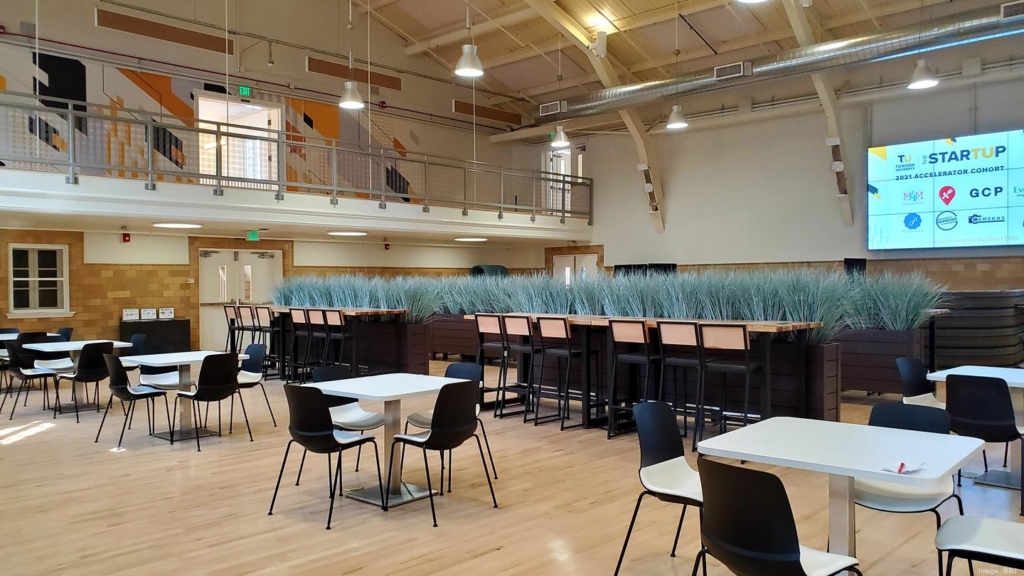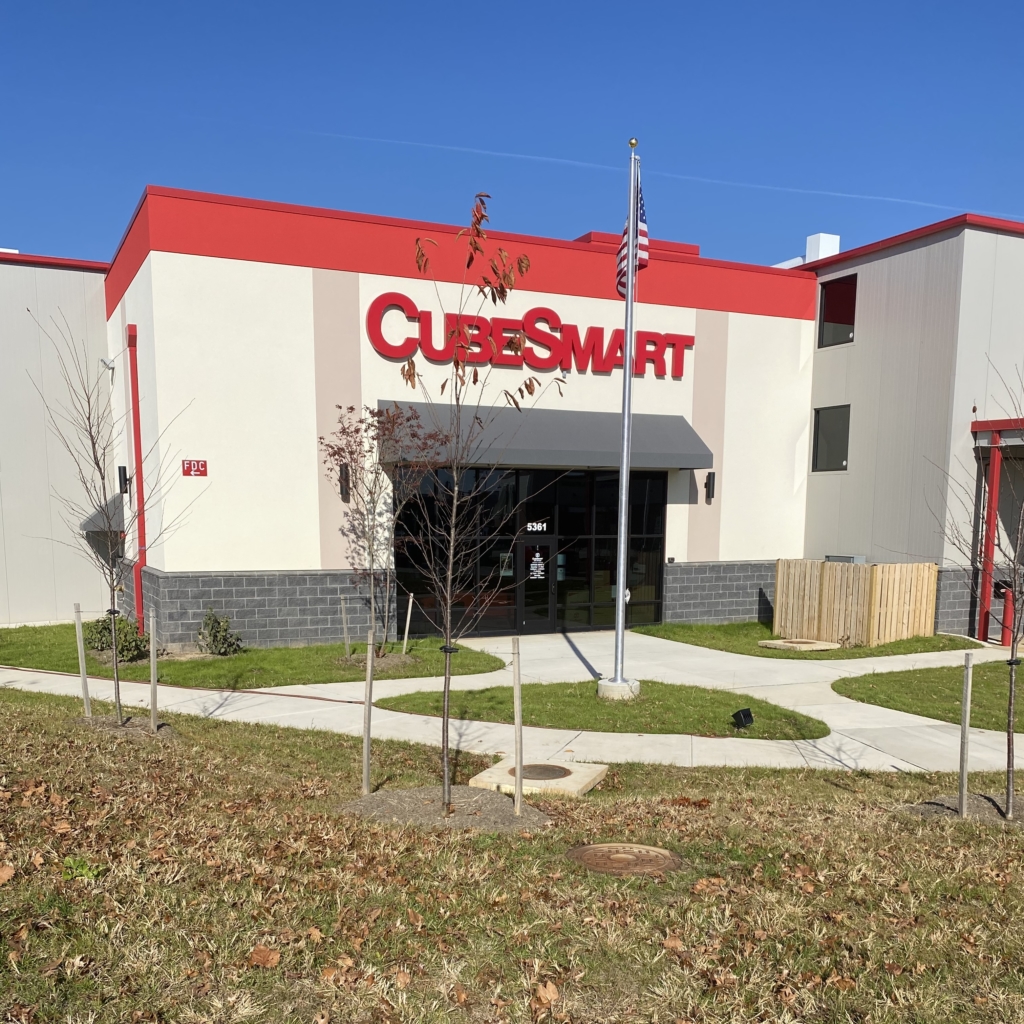Through innovative thinking and expert construction, some project teams transformed unusual — even unsightly — materials into extraordinary commercial spaces over the past year.
At the former Maryland National Guard Armory in Towson, a project team lead by Chesapeake Contracting Group enabled Greenberg Gibbons and Towson University to realize their vision of turning the long-vacant building into bright, modern, communal space for students, entrepreneurs and county residents. Completed last September after two years of planning and construction, the 26,000-square-foot Armory at Towson Row, winner of the Best Adaptive Reuse Award, includes 6,000 square feet of free co-working space, the home of the StarTUp business accelerator program, 15 offices for university-affiliated ventures, conference rooms, a media/gaming high-tech room, state of the art technology and high-speed Wi-Fi throughout the building, a Starbucks Coffee and an event space capable of hosting 500 guests.

BEST ADAPTIVE REUSE AWARD
Extraordinary renovations converted the 1933 Towson Armory into a modern center for co-working, entrepreneurism and community events. Photo courtesy of Chesapeake Contracting Group.
Converting a 1933 armory into a thoroughly modern community space, however, was anything but simple.
The armory’s gymnasium “leaked like a sieve,” requiring crews to install a new roof and replace the wooden gym floor, said E.J. Youngling, Vice President of Chesapeake Contracting Group. The building’s stone veneer had deteriorated significantly so crews had to repoint about 60 percent of the exterior to stop other leaks and preserve the historic façade. But the biggest challenges happened beneath the building.
“The new facility would need an elevator, but that building sits on rock so on the north side of the building, we had to create an opening, get into the crawl space and remove enough rock to create an elevator pit and shaft,” Youngling said. “We had to dig to the right elevation so we didn’t undermine the existing foundation…and build the elevator shaft in a fairly confined space. There wasn’t enough room to get a bobcat or a backhoe down there, so we used a lot of brute force – jackhammers, buckets and a stone shooter conveyor.”
That three and a half month task wasn’t the only underground challenge. Tying the new building systems into water and sewer lines involved working in the crawl space beneath the former gymnasium and then reworking construction plans when crews realized the infrastructure wasn’t where they expected. Similarly, installing communications infrastructure required running conduit beneath the new gym floor.
“At some places in the crawl space, the guys could squat and move around. But in some places, they were literally working on their bellies,” Youngling said.
Yet the team delivered elegant solutions to the construction challenges. Responding to the client’s request to not place conduit or junction boxes on the walls of the lofty new event space, the project team installed the infrastructure between the floor joists and beneath removeable floor panels which blended with the rest of the hardwood but enabled building users to access communications equipment when needed. Similarly, Chesapeake coordinated closely with the architect, engineer and subcontractors to conceal new HVAC systems within the ceiling without compromising the desired ceiling height.
“The transformation of that building is amazing. It went from a leaky, old gym with a shooting range to a spectacular event space,” Youngling said. “Towson Row is such a great project for Greenberg Gibbons. This is a cherry on the top.”
In White Marsh, Iacoboni Site Specialists completed another adaptive reuse project but starting with a dramatically different material. On the surface, Cube Smart Self Storage, winner of the Best Industry Innovation Award, looks like a typical storage facility. The 144,000-square-foot facility, however, was built out of 417 retrofitted, 40-foot long, intermodal shipping containers.

BEST INDUSTRY INNOVATION AWARD
A first-of-its-kind project in Maryland, the 144,000-square-foot CubeSmart self-storage facility in White Marsh was constructed from 417 retrofitted shipping containers. Photo courtesy of Iacoboni Site Specialists.
“It was a neat project to watch come together,” said Greg Anderson, Project Manager at Iacoboni. “All the containers were prefabbed. They had openings cut in them for hallways, walls added in places and rollup doors added. A crane stacked these things three high, like putting together Lego blocks.”
A first-of-its kind project in Maryland, the 1,072-unit storage facility presented the project team with “unique challenges in terms of how the foundations were designed, site grading and staging for the crane,” Anderson said.
The project included installing prefabricated walls around the building’s exterior to make it look like a typical self-storage facility and creating a foundation to support those walls.
Although foundation work on the project was minimal compared to other similarly sized buildings, “the soil had to be managed properly and we had contingencies for doing cement soil,” Anderson said.
Iacoboni, which places special emphasis on preserving the environment throughout and following construction, took extra measures to control sediment, including installation of super silt fencing around the project to prevent runoff.